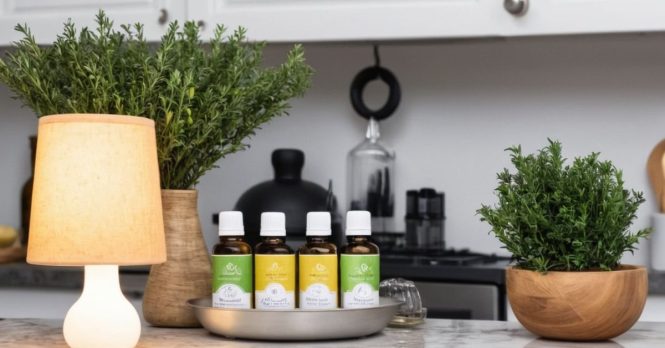

Eliminating cabinet odors is a common household problem, affecting kitchens and pantries alike. Unpleasant smells can linger, impacting food preparation and creating an unwelcome ambiance. This article dives into the causes of cabinet odors and explores proven methods for eliminating these unwanted smells. We’ll discuss the root causes, offer practical solutions, and provide insights into maintaining odor-free cabinets for the long term. This guide is structured to walk you through each step, from initial assessment to proactive measures.
Understanding the Root Causes of Cabinet Odors
Identifying the Source of the Smell
Cabinet odors often stem from organic materials like food spills, crumbs, and decaying leftovers. These materials can decompose, releasing unpleasant smells. Furthermore, moisture trapped within cabinets can contribute to mold and mildew growth, intensifying the odor problem. Other possible sources include old or improperly stored foods, like spices, dry goods, or even cleaning products. Identifying the specific culprit is the first step towards eliminating the odor.
Implementing Effective Cleaning Techniques
Thorough Cleaning and Disinfection
Thorough cleaning is paramount to eliminating cabinet odors. Start by removing all items from the cabinets. Wipe down surfaces with a solution of warm water and dish soap. For stubborn stains, use a mixture of baking soda and water. Don’t neglect the corners and crevices where odors often linger. A deep clean is important because food particles and liquids left behind are the prime breeding grounds for odors. For a more potent clean, a mixture of vinegar or lemon juice can be used. Using a disinfectant in the cleaning process is also important, as mold and mildew can add to the odor. Consider using specialized cabinet cleaning products if needed. Be sure to dry surfaces completely to avoid moisture buildup.
Exploring Natural Remedies for Cabinet Odors
Natural Odor Absorbers
Natural odor absorbers are a safe and effective solution to eliminate cabinet odors. Baking soda is excellent for absorbing unpleasant smells. Place open boxes of baking soda in the cabinets. Alternatively, use activated charcoal, which is an excellent odor absorber, as it absorbs odors through physical adsorption. Fresh herbs such as spearmint or rosemary, placed in a bowl, can also act as natural fresheners. If you prefer a more aromatic approach, a bowl of dried lavender can also help mask and eliminate odors.
Preventing Future Cabinet Odors
Proper Food Storage and Organization
Maintaining proper food storage habits and organization is essential for odor prevention. Use airtight containers to store food. This is particularly important for foods that have a strong odor, like onions, garlic, and fish. Keep your kitchen organized, ensuring that spills are dealt with promptly. Ensure proper ventilation within the cabinets to help reduce moisture and humidity. Don’t forget to regularly inspect and clean containers and shelves for accumulated food particles or spills.
Utilizing Specialized Products for Odor Removal
Odor Eliminating Sprays and Treatments
Specialized odor-eliminating sprays and treatments can significantly improve the freshness of your cabinets. These products often contain ingredients that neutralize odors. When using them, ensure the cabinets are well-ventilated to avoid any chemical reactions or lingering smells. Following the product instructions carefully is vital. For those looking for more environmentally friendly options, consider homemade natural odor-eliminators using essential oils. Always test in an inconspicuous area first.
Advanced Strategies for Tough Odors
Dealing with Persistent Cabinet Odors
Persistent cabinet odors can be a challenge, but not impossible to resolve. If you’ve exhausted the basic solutions, consider using specialized odor-eliminating sprays or powders. If possible, consider professional cleaning services to assess the situation and provide a suitable remedy.
Maintaining Odor-Free Cabinets for the Long Term
Regular Inspections and Maintenance
Proactive measures to maintain an odor-free environment include regular inspections of your cabinets, looking for spilled foods or moisture build-up, and promptly addressing these problems. By consistently cleaning and organizing your cabinets, you can keep smells from lingering.
The Role of Ventilation in Cabinet Odor Control
Improving Cabinet Ventilation
Proper ventilation is crucial for preventing moisture buildup and subsequent odor development. Consider adding a vent or a small fan to your cabinet if you experience high humidity.
Specific Cleaning Tips for Different Cabinet Materials
Material-Specific Cleaning Advice
Different cabinet materials require different cleaning approaches. Wood cabinets might need specialized cleaners, while laminate or metal cabinets may react differently to cleaning solutions. Always consult product labels for specific instructions or consider professional cleaning services if you’re uncertain about the correct cleaning method.
FAQ
What are the most common causes of cabinet odors?
Common causes of cabinet odors include food spills, decaying leftovers, moisture buildup, mold and mildew growth, old or improperly stored foods, and cleaning products. Addressing the root cause is crucial to eliminate the smell entirely. Identifying the specific source will help pinpoint the exact treatment required.
How can I prevent cabinet odors from recurring?
Maintaining proper food storage, keeping cabinets clean and dry, ensuring proper ventilation, and regularly inspecting for spills and residues can prevent cabinet odors from returning. Regular cleaning and maintenance are essential.
In conclusion, eliminating cabinet odors requires a multifaceted approach. Understanding the root cause, employing targeted cleaning methods, and preventing future issues are crucial. By addressing these steps, you can enjoy fresh, odor-free cabinets. Remember to regularly inspect and maintain your cabinets to prevent odors from returning. This comprehensive guide has provided you with the tools to tackle this common household problem. Visit our website for more home improvement tips and tricks!